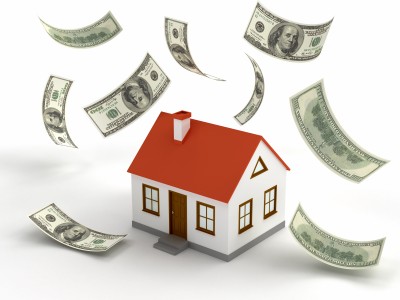Interested in conserving the environment? Intrigued with the idea of providing a haven for neighborhood wildlife AND reducing the amount of work, water, and chemicals needed to keep your landscaping alive, well, and attractive? Read on…
Winter is the perfect time to plan a backyard wildlife habitat for your Chester County PA home and design a garden that provides essential kinds of wildlife, such as birds, butterflies, amphibians, and small mammals. Because natural environments are quickly disappearing due to rapid development, greener gardening techniques which are mindful of the ecosystems and needs of native creatures have become essential.
There are many online sites which provide detailed instructions for turning your property into a mini-sanctuary for wildlife, but the initial steps are relatively simple and include providing food, water, cover, and space.
Provide Food for Wildlife
 Everyone needs to eat! Planting native herbs, grasses, shrubs, and trees is the easiest way to provide the foliage, nectar, pollen, berries, seeds and nuts that many species of wildlife require to survive and thrive. You can also incorporate supplemental feeders and food sources.
Everyone needs to eat! Planting native herbs, grasses, shrubs, and trees is the easiest way to provide the foliage, nectar, pollen, berries, seeds and nuts that many species of wildlife require to survive and thrive. You can also incorporate supplemental feeders and food sources.
Supply Water for Wildlife
Wildlife need clean water sources for many purposes, including drinking, bathing and reproduction. Water sources may include natural features such as ponds, lakes, rivers, and wetlands; or human-made features such as bird baths (change water 2 to 3 times per week), puddling areas for butterflies, installed ponds, or rain gardens.
Create Cover for Wildlife
Wildlife require places to hide in order to feel safe from people, predators, and inclement weather. Use things like native flowers, leaves, shrubs, thickets, brush piles or even dead trees. Remember to utilize both the horizontal and vertical spaces in your yard.
Give Wildlife a Place to Raise Their Young
Wildlife need a sheltered place to raise their offspring. Many places for cover can double as locations where wildlife can raise young, from wildflower meadows and bushes where many butterflies and moths lay their eggs to caves where bats roost and form colonies.
Green gardening for your Chester County PA home targets a reduction in water and chemical use, a decrease in the size of the area covered with turf grass, and generous use of mulch. How you maintain your garden or landscape (either formal or casual) can have important positive or negative effects on the health of the soil, air, water and vegetation that we all use! Here are some sustainable gardening techniques that you will help you conserve and protect our natural resources.
Mulching
Mulch helps keep water in the soil and available to the plant, rather than evaporating into the air. This can help reduce water consumption. As mulch breaks down, it provides nutrients to the soil, which can help reduce or eliminate the need for additional fertilizers. Be sure to use mulches that are from sustainable forestry practices (not Cypress tree mulch) and are free from pests and diseases. Your cooperative extension office can help you find sources of mulch in your local community.
Reducing Lawn Areas
Grass lawns often require chemicals and frequent maintenance. Gas-powered lawnmowers produce high amounts of greenhouse gases, which contribute to the air pollution that causes global warming. Since lawns are often made of only a few types of plants that most animals do not consume, they do not provide a lot of value for wildlife. Replacing grass lawns with native wildflowers, bushes, and trees provides the food, shelter, and cover that help to maintain healthy, natural ecosystems and reduces your time and labor working on the lawn!
Xeriscaping
Xeriscaping is an approach to landscaping that minimizes outdoor water use while maintaining soil integrity through the use of native, drought-tolerant plants. This is a common practice in drier areas, where water supplies and water quality are in very short supply.
Removing Invasives and Restoring Native Plant Communities
Native plants are better for the environment than exotic plants, generally requiring less fertilizer and other additives, less water, and less effort in pest control. They are especially important to native wildlife, such as pollinators, that may have coevolved with a particular species. Pollinators often rely on a certain type of flower as a source of food, while the flower depends on the pollinator to transport its pollen to other flowers for reproduction. When non-native or exotic plants are used, they often upset the delicate balance of a local ecosystem and sometimes even out-compete native species (hence the term invasive) to the point of extinction. Wildlife benefit more when native plant communities remain intact or are restored to their natural habitats, thus providing the best source of food for wildlife.
How to get started? Inventory what is presently in the backyard of your Chester County PA home and consider what can stay, what should go, and what is needed. Locate a list of plants and trees that are native to your area. Contact your local nurseries or agriculture extension office or search for assistance on line. Two informative sites are National Wildlife Federation and Wildlife Habitat. Also, give yourself a pat on the back for helping to restore natural habitats--and look forward to spring!


 PRIMARY RESIDENCES
PRIMARY RESIDENCES Everyone needs to eat! Planting native herbs, grasses, shrubs, and trees is the easiest way to provide the foliage, nectar, pollen, berries, seeds and nuts that many species of wildlife require to survive and thrive. You can also incorporate supplemental feeders and food sources.
Everyone needs to eat! Planting native herbs, grasses, shrubs, and trees is the easiest way to provide the foliage, nectar, pollen, berries, seeds and nuts that many species of wildlife require to survive and thrive. You can also incorporate supplemental feeders and food sources. 



